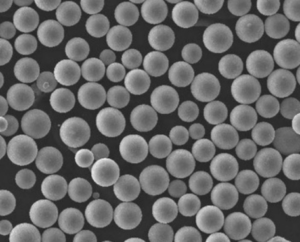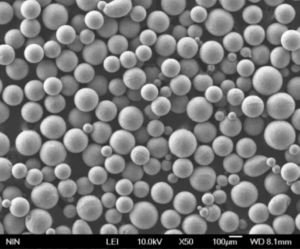Giriş
Yüksek saflıkta demir tozu metalürjiden elektroniğe kadar çeşitli endüstrilerde kullanılan kritik bir malzemedir. Peki onu bu kadar özel kılan tam olarak nedir? Normal demir tozundan farkı nedir? Bu kılavuzda, yüksek saflıkta demir tozu dünyasının derinliklerine dalacak, bileşimini, özelliklerini, uygulamalarını ve çok daha fazlasını keşfedeceğiz. İster deneyimli bir profesyonel ister meraklı bir öğrenci olun, bu makale yüksek saflıkta demir tozu hakkındaki tüm sorularınızı yanıtlamak için tasarlanmıştır.
Yüksek Saflıkta Demir Tozuna Genel Bakış
Yüksek saflıkta demir tozu, ,9 veya daha yüksek saflık seviyesine sahip demir tozudur. Eşsiz özellikleri sayesinde yüksek mukavemet, mükemmel iletkenlik veya spesifik manyetik özellikler gerektiren özel uygulamalar için idealdir. Yüksek saflıkta demir tozu üretimi, atomizasyon veya indirgeme gibi gelişmiş süreçleri içerir ve tutarlı partikül boyutu ve şekline sahip ince bir tozla sonuçlanır.
Yüksek Saflıkta Demir Tozunun Temel Özellikleri
- Saflık: Tipik olarak ,9 veya daha yüksek
- Parçacık Boyutu: Birkaç mikrometreden birkaç yüz mikrometreye kadar değişebilir
- Şekil: Üretim yöntemine bağlı olarak küresel veya düzensiz
- Manyetik Özellikler: Yüksek doygunluk mıknatıslanması
- Elektriksel İletkenlik: Yüksek saflık seviyesi sayesinde mükemmel
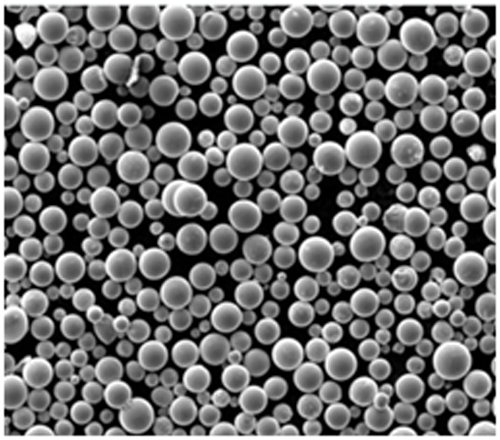
Yüksek Saflıkta Demir Tozunun Bileşimi ve Özellikleri
| Mülkiyet | Açıklama |
|---|---|
| Saflık | 99.9 veya daha yüksek |
| Parçacık Boyutu | Birkaç mikrometreden birkaç yüz mikrometreye kadar |
| Şekil | Küresel veya düzensiz |
| Manyetik Doygunluk | Yüksek |
| Elektriksel İletkenlik | Minimum safsızlık nedeniyle mükemmel |
| Yoğunluk | Partikül boyutuna ve şekline bağlı olarak değişir |
| Yüzey Alanı | Daha ince tozlarda daha yüksek |
| Oksijen İçeriği | Düşük, minimum oksidasyon sağlar |
Türleri ve Modelleri Yüksek Saflıkta Demir Tozu
Her biri belirli uygulamalara göre uyarlanmış çeşitli yüksek saflıkta demir tozu türleri vardır. Bu tipler arasındaki farklar partikül boyutu, şekli ve üretim yöntemlerinde yatmaktadır. Aşağıda, piyasada bulunan en yaygın modellerden bazılarını tartışıyoruz:
1. Atomize Demir Tozu
Atomize demir tozu, erimiş demirin toz halinde katılaşan ince damlacıklar halinde dağıtıldığı atomizasyon işlemiyle üretilir. Bu tip tipik olarak küresel bir şekle sahiptir ve akışkanlığın ve paketleme yoğunluğunun önemli olduğu uygulamalarda kullanılır.
- Saflık: ,9 veya daha yüksek
- Uygulamalar: Toz metalurjisi, manyetik malzemeler, metal enjeksiyon kalıplama (MIM)
2. İndirgenmiş Demir Tozu
İndirgenmiş demir tozu, demir cevherinin veya değirmen ölçeğinin hidrojen atmosferinde indirgenmesiyle üretilir. Tipik olarak düzensiz bir şekle sahiptir ve kimyasal reaksiyonlar veya katalizör gibi yüzey alanının kritik olduğu uygulamalarda kullanılır.
- Saflık: ,5 ila ,9
- Uygulamalar: Kimyasal sentez, ilaç endüstrisi, manyetik malzemeler
3. Elektrolitik Demir Tozu
Elektrolitik demir tozu, demirin elektrolizi yoluyla üretilir. Bu yöntem çok yüksek saflık ve kontrollü bir parçacık boyutu dağılımı ile sonuçlanır. Genellikle yüksek hassasiyet ve saflık gerektiren uygulamalarda kullanılır.
- Saflık: ,9 veya daha yüksek
- Uygulamalar: Elektronik, pil üretimi, yüksek performanslı mıknatıslar
4. Karbonil Demir Tozu
Karbonil demir tozu, demir pentakarbonilin ayrıştırılmasıyla üretilir. Bu yöntem, genellikle yüksek mıknatıslanma ve minimum safsızlık gerektiren uygulamalarda kullanılan ultra ince küresel partiküller oluşturur.
- Saflık: ,9 veya daha yüksek
- Uygulamalar: Elektronik, indüktörler, elektromanyetik ekranlama
5. Su Atomize Demir Tozu
Atomize demir tozuna benzer, ancak dağıtıcı ortam olarak su kullanılan su atomize demir tozu düzensiz şekillere sahiptir ve maliyet ile performans arasında bir denge kurulması gereken yerlerde kullanılır.
- Saflık: ,5 ila ,9
- Uygulamalar: Toz metalurjisi, otomotiv parçaları, metal enjeksiyon kalıplama (MIM)
6. Gaz-Atomize Demir Tozu
Erimiş demiri dağıtmak için inert gazlar kullanılarak oluşturulan gaz atomize demir tozu, tipik olarak daha düzgün bir küresel şekle sahiptir ve yüksek performanslı uygulamalarda kullanılır.
- Saflık: ,9 veya daha yüksek
- Uygulamalar: Havacılık ve uzay, 3D baskı, manyetik malzemeler
7. Ultra İnce Demir Tozu
Ultra ince demir tozu, genellikle nanometre aralığında olan son derece küçük parçacık boyutu ile karakterize edilir. Kaplamalar, mürekkepler ve nanoteknoloji gibi gelişmiş uygulamalarda kullanılır.
- Saflık: ,9 veya daha yüksek
- Uygulamalar: Kaplamalar, nanoteknoloji, iletken mürekkepler
8. Yüksek Yoğunluklu Demir Tozu
Yüksek yoğunluklu demir tozu, maksimum paketleme yoğunluğu gerektiren uygulamalar için tasarlanmıştır ve tipik olarak yüksek performanslı metalurjide kullanılır.
- Saflık: ,7 ila ,9
- Uygulamalar: Havacılık ve uzay, otomotiv, ağır makine
9. Manyetik Demir Tozu
Manyetik demir tozu, manyetik özelliklerini geliştirmek için özel olarak işlenir ve indüktörler, transformatörler ve manyetik ekranlama gibi uygulamalarda kullanılır.
- Saflık: ,9 veya daha yüksek
- Uygulamalar: Transformatörler, indüktörler, manyetik ekranlama
10. Sprey Şeklinde Demir Tozu
Püskürtmeyle şekillendirilmiş demir tozu, hızlı bir katılaştırma işlemi kullanılarak oluşturulur ve bu da gelişmiş mekanik özellikler sağlayan benzersiz bir mikroyapı ile sonuçlanır.
- Saflık: ,8 ila ,9
- Uygulamalar: Takımlar, yapısal parçalar, yüksek performanslı alaşımlar
Yüksek Saflıkta Demir Tozu Uygulamaları
Yüksek saflıkta demir tozu, olağanüstü özellikleri nedeniyle çok çeşitli endüstrilerde kullanılmaktadır. Uygulamaları geleneksel metalürjiden en yeni elektronik ve nanoteknolojiye kadar uzanmaktadır.
Tablo: Yüksek Saflıkta Demir Tozu Uygulamaları
| Uygulama Alanı | Açıklama |
|---|---|
| Toz Metalurjisi | Sinterleme ve diğer işlemler yoluyla yüksek mukavemetli, hassas parçalar oluşturmak için kullanılır. |
| Elektronik | İndüktörler, kapasitörler ve transformatörler gibi bileşenlerin üretiminde gereklidir. |
| Manyetik Malzemeler | Motorlar ve sensörler dahil olmak üzere çeşitli uygulamalar için yüksek performanslı mıknatıslar üretmek için kullanılır. |
| Kimyasal Sentez | Kimyasal reaksiyonlarda katalizör görevi görür ve sentetik malzemelerin üretiminde kullanılır. |
| İlaçlar | Yüksek saflığı nedeniyle bazı ilaç formülasyonlarının üretiminde kullanılır. |
| Nanoteknoloji | Gelişmiş malzemeler ve kaplamalarda, genellikle nano ölçek düzeyinde kullanılır. |
| Akü Üretimi | Yüksek performanslı pillerin üretiminde, özellikle katot ve anot malzemelerinde kullanılır. |
| Katmanlı Üretim | İnce, homojen tozlar sağlayan 3D baskı ve diğer katkılı üretim teknikleri için gereklidir. |
| Elektromanyetik Ekranlama | Elektronik cihazları elektromanyetik parazitlerden koruyan malzemelerin oluşturulmasında kullanılır. |
| Yüksek Performanslı Alaşımlar | Özellikle havacılık ve otomotiv uygulamalarında mekanik özelliklerini iyileştirmek için alaşımlara eklenir. |
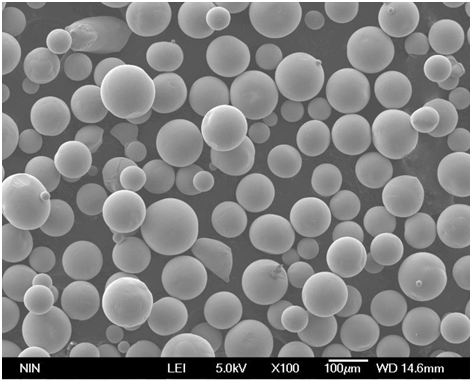
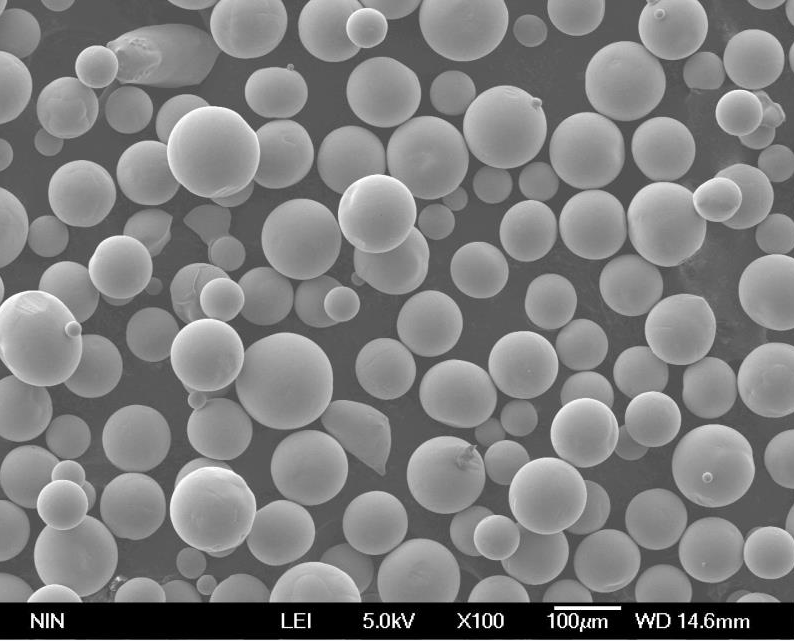
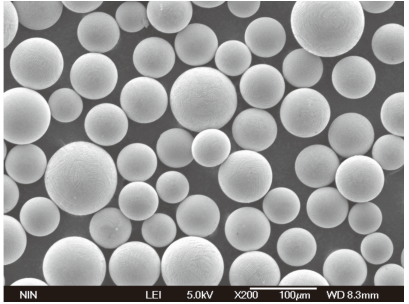

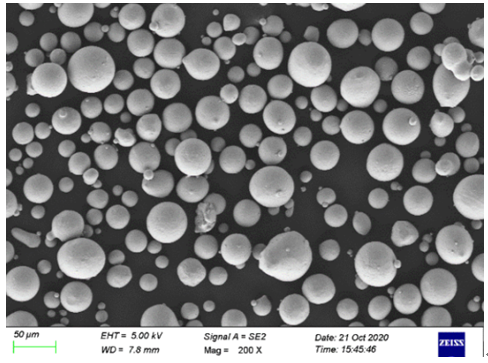
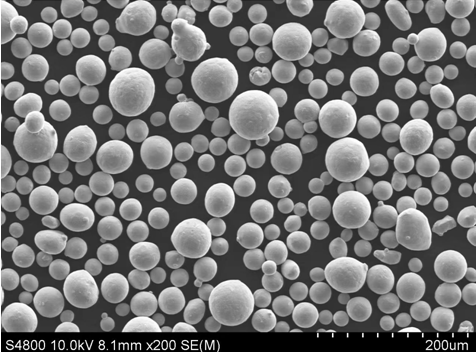
Spesifikasyonlar, Boyutlar, Kaliteler ve Standartlar
Yüksek saflıkta demir tozu seçerken, geçerli olan spesifikasyonları, boyutları, dereceleri ve standartları anlamak çok önemlidir. Bu parametreler amaçlanan uygulamaya bağlı olarak değişebilir ve doğru seçimi bilmek performansı önemli ölçüde etkileyebilir.
Tablo: Yüksek Saflıkta Demir Tozu Özellikleri
| Şartname | Açıklama |
|---|---|
| Saflık Seviyeleri | 99.5 ila ,9 veya daha yüksek |
| Partikül Boyut Aralığı | Nanometreden (nm) birkaç yüz mikrometreye (µm) kadar |
| Sınıf Standartları | Sektöre bağlı olarak ASTM, ISO, JIS |
| Mevcut Şekiller | Küresel, düzensiz, pul |
| Üretim Yöntemi | Atomizasyon, indirgeme, elektrolitik, karbonil |
| Yoğunluk Aralığı | Partikül boyutu ve şekline bağlıdır; tipik olarak 2,5-7,8 g/cm³ |
| Manyetik Özellikler | Yüksek doygunluk mıknatıslanması, düşük zorlayıcılık |
| İletkenlik | Minimum safsızlık nedeniyle yüksek elektrik iletkenliği |
Tablo: Yüksek Saflıkta Demir Tozu Sınıfları
| Sınıf | Saflık Seviyesi | Uygulamalar |
|---|---|---|
| A Sınıfı | 99.9 veya daha yüksek | Elektronik, tıbbi cihazlar, yüksek performanslı mıknatıslar |
| B Sınıfı | 99.7 ila ,9 | Toz metalurjisi, kimyasal sentez |
| C Sınıfı | 99.5 ila ,7 | Katmanlı üretim, otomotiv bileşenleri |
| D Sınıfı | 99.0 ila ,5 | Genel metalurji, kalıp, yapısal parçalar |
Tedarikçiler ve Fiyatlandırma Detayları Yüksek Saflıkta Demir Tozu
Yüksek saflıkta demir tozunun bulunabilirliği ve maliyeti tedarikçiye, bölgeye ve özel ürün gereksinimlerine bağlı olarak önemli ölçüde değişebilir. Aşağıda önde gelen bazı tedarikçilere ilişkin bir kılavuz yer almaktadır
tedarikçiler ve fiyatlandırma detayları.
Tablo: Yüksek Saflıkta Demir Tozu Tedarikçileri ve Fiyatları
| Tedarikçi | Konum | Ürün Yelpazesi | Fiyat Aralığı (kg başına) |
|---|---|---|---|
| Höganäs AB | İsveç | Atomize, indirgenmiş, elektrolitik tozlar | $50 – $200 |
| JFE Çelik Şirketi | Japonya | Elektronik ve metalurji için yüksek saflıkta demir tozu | $80 – $250 |
| Rio Tinto Metal Tozları | Kanada | Gaz atomize, su atomize tozlar | $60 – $180 |
| BASF | Almanya | Karbonil demir tozu, ultra ince tozlar | $100 – $300 |
| GKN Toz Metalurjisi | ABD | Yüksek yoğunluklu, manyetik demir tozları | $70 – $220 |
| Mitsui Mining & Smelting | Japonya | Püskürtmeyle şekillendirilmiş, ultra yüksek saflıkta tozlar | $90 – $280 |
| CNPC Toz Grubu | Çin | İndirgenmiş, atomize, elektrolitik tozlar | $40 – $150 |
| Kobe Çelik | Japonya | Gelişmiş uygulamalar için özel kaliteler | $110 – $320 |
| Sandvik Malzeme Teknolojisi | İsveç | Havacılık ve otomotiv için yüksek performanslı demir tozları | $120 – $350 |
| Amerikan Unsurları | ABD | Nanopartiküller, ultra ince tozlar | $200 – $500 |
Yüksek Saflıkta Demir Tozunun Avantajları ve Sınırlamaları
Her malzeme gibi, yüksek saflıkta demir tozu da kendine özgü avantaj ve sınırlamalarla birlikte gelir. Bunları anlamak, uygulamanız için doğru türü seçmenize yardımcı olabilir.
Tablo: Yüksek Saflıkta Demir Tozunun Avantajları ve Sınırlamaları
| Avantajlar | Sınırlamalar |
|---|---|
| Yüksek Mukavemet | Sağlam mekanik özellikler gerektiren uygulamalar için ideal |
| Mükemmel Manyetik Özellikler | Manyetik malzemeler ve elektromanyetik ekranlama için mükemmel |
| Yüksek Saflık | Safsızlıkları azaltarak iletkenliği ve performansı artırır |
| Çok Yönlü Uygulamalar | Elektronikten eczacılığa kadar çok çeşitli sektörlerde kullanılabilir |
| Özelleştirme | Özel ihtiyaçlara uygun çeşitli sınıflarda, boyutlarda ve şekillerde mevcuttur |
| Maliyet | Daha yüksek saflık seviyeleri pahalı olabilir |
| Üretim Karmaşıklığı | Kullanılabilirliği sınırlayabilen gelişmiş üretim yöntemleri gerektirir |
| Sınırlı Tedarikçiler | Düşük dereceli demir tozları kadar yaygın olarak bulunmaz |
| Oksidasyon Hassasiyeti | Yüksek saflıktaki demir oksidasyona daha yatkın olabilir ve dikkatli depolama gerektirir |
Yüksek Saflıkta Demir Tozunun Diğer Metal Tozları ile Karşılaştırılması
Yüksek saflıkta demir tozu diğer metal tozlarına kıyasla nasıl bir performans sergiliyor? Yaygın olarak kullanılan bazı alternatiflerle karşılaştıralım:
Tablo: Yüksek Saflıkta Demir Tozunun Diğer Metal Tozları ile Karşılaştırılması
| Metal Tozu | Saflık Seviyesi | Uygulamalar | Avantajlar | Sınırlamalar |
|---|---|---|---|---|
| Yüksek Saflıkta Demir Tozu | 99.5 ila ,9 veya daha yüksek | Elektronik, metalurji, kimyasal sentez | Yüksek mukavemet, mükemmel manyetik özellikler, yüksek iletkenlik | Daha yüksek maliyet, oksidasyona karşı hassas |
| Alüminyum Tozu | 99.0 ila ,8 | Hafif alaşımlar, piroteknikler, kaplamalar | Hafif, iyi iletkenlik, korozyon direnci | Daha düşük güç, daha az manyetik özellik |
| Bakır Tozu | 99.9 veya daha yüksek | İletken mürekkepler, elektronik, lehimleme | Mükemmel iletkenlik, iyi termal özellikler | Daha yüksek maliyet, oksidasyona yatkınlık |
| Nikel Tozu | 99.0 ila ,9 | Yüksek performanslı alaşımlar, bataryalar | Korozyon direnci, iyi manyetik özellikler | Pahalı, sınırlı bulunabilirlik |
| Paslanmaz Çelik Toz | 95 ila ,5 | Kalıplama, 3D baskı, yapısal parçalar | Korozyon direnci, yüksek mukavemet | Saf metallerden daha ağır, daha az iletken |
| Titanyum Tozu | 99.5 ila ,9 | Havacılık ve uzay, tıbbi implantlar, katmanlı üretim | Yüksek mukavemet/ağırlık oranı, biyouyumlu | Çok pahalı, işlenmesi zor |
| Kobalt Tozu | 99.0 ila ,9 | Süper alaşımlar, bataryalar, manyetik malzemeler | Yüksek sıcaklık direnci, iyi manyetik özellikler | Pahalı, sınırlı bulunabilirlik |
| Gümüş Tozu | 99.9 veya daha yüksek | Elektronik, tıbbi cihazlar, iletken mürekkepler | En iyi elektrik iletkenliği, antimikrobiyal özellikler | Son derece pahalı, kararmaya eğilimli |
| Çinko Tozu | 99.0 ila ,5 | Galvanizleme, bataryalar, eczacılık ürünleri | İyi korozyon direnci, ucuz | Daha düşük mukavemet, daha düşük iletkenlik |
| Magnezyum Tozu | 99.0 ila ,5 | Hafif alaşımlar, piroteknikler, bataryalar | Çok hafif, iyi işlenebilirlik | Yüksek reaktif, yanıcı |
Doğru Seçim Nasıl Yapılır Yüksek Saflıkta Demir Tozu başvurunuz için
Uygulamanız için doğru yüksek saflıkta demir tozunu seçmek karmaşık bir karar olabilir. İşte dikkate alınması gereken bazı temel faktörler:
1. Saflık Seviyesi
Gerekli saflık seviyesi uygulamanıza bağlıdır. Örneğin, safsızlıkların performansı önemli ölçüde etkileyebileceği elektronik ve eczacılıkta, ,9 veya daha yüksek saflıkta demir tozuna ihtiyacınız olacaktır. Öte yandan, genel metalürji için biraz daha düşük bir saflık seviyesi yeterli olabilir.
2. Partikül Boyutu ve Şekli
Partikül boyutu ve şekli tozun akışkanlığını, paketleme yoğunluğunu ve yüzey alanını etkileyebilir. Küresel tozlar genellikle metal enjeksiyon kalıplama gibi iyi akışkanlık gerektiren uygulamalarda tercih edilirken, düzensiz partiküller daha yüksek yüzey alanları nedeniyle kimyasal sentez için daha iyi olabilir.
3. Manyetik Özellikler
Uygulamanız manyetik malzemeler içeriyorsa, yüksek manyetik doygunluğa ve düşük zorlayıcılığa sahip demir tozlarına odaklanın. Manyetik demir tozları ve karbonil demir tozları bu tür uygulamalar için genellikle en iyi seçeneklerdir.
4. Üretim Yöntemi
Üretim yöntemi demir tozunun hem maliyetini hem de özelliklerini etkileyebilir. Örneğin, atomize tozlar genellikle daha pahalıdır ancak daha iyi akışkanlık ve paketleme yoğunluğu sunarken, indirgenmiş tozlar daha uygun maliyetli ancak daha az homojen olabilir.
5. Maliyet ve Bulunabilirlik
Son olarak, bütçenizi ve belirli bir yüksek saflıkta demir tozu sınıfının bulunabilirliğini göz önünde bulundurun. Yüksek saflıkta, özel tozlar üstün performans sunarken, aynı zamanda daha yüksek bir maliyete sahiptirler ve sınırlı tedarikçileri olabilir.
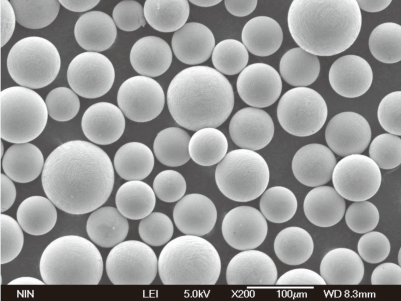
SSS
Yüksek saflıkta demir tozu nedir?
Yüksek saflıkta demir tozu, ,9 veya daha yüksek saflık seviyesine sahip ince bir demir tozudur. Yüksek mukavemet, mükemmel iletkenlik veya manyetik özellikler gibi belirli özellikler gerektiren çeşitli uygulamalarda kullanılır.
Yüksek saflıkta demir tozu nasıl yapılır?
Yüksek saflıkta demir tozu, atomizasyon, indirgeme, elektroliz ve demir pentakarbonilin ayrıştırılması dahil olmak üzere çeşitli yöntemlerle üretilebilir. Yöntem seçimi, istenen partikül boyutuna, şekline ve saflık seviyesine bağlıdır.
Yüksek saflıkta demir tozunun yaygın uygulamaları nelerdir?
Yüksek saflıkta demir tozu elektronik, toz metalurjisi, manyetik malzemeler, kimyasal sentez, ilaç ve katkılı üretim gibi sektörlerde kullanılmaktadır. Uygulamaları yüksek performanslı mıknatıslardan gelişmiş pil malzemelerine kadar uzanmaktadır.
Atomize ve indirgenmiş demir tozu arasındaki fark nedir?
Atomize demir tozu, erimiş demirin ince damlacıklar halinde dağıtılarak küresel partiküller elde edilmesiyle üretilirken, indirgenmiş demir tozu, demir cevherinin hidrojen atmosferinde indirgenmesiyle elde edilir ve düzensiz şekilli partiküller ortaya çıkar. Atomize tozlar akışkanlıkları için tercih edilirken, indirgenmiş tozlar daha yüksek yüzey alanları için kullanılır.
İhtiyaçlarım için doğru yüksek saflıkta demir tozunu nasıl seçerim?
Gerekli saflık seviyesi, partikül boyutu ve şekli, manyetik özellikler, üretim yöntemi ve maliyet gibi faktörleri göz önünde bulundurun. Özel uygulamanız en iyi yüksek saflıkta demir tozu seçimini belirleyecektir.
Yüksek saflıkta demir tozunu nereden satın alabilirim?
Yüksek saflıkta demir tozu, Höganäs AB, JFE Steel Corporation, Rio Tinto Metal Powders, BASF ve GKN Powder Metallurgy dahil olmak üzere dünya çapında çeşitli tedarikçilerden temin edilebilir. Fiyatlar kaliteye, saflık seviyesine ve tedarikçiye bağlı olarak değişir.
Yüksek saflıkta demir tozu kullanmanın avantajları nelerdir?
Yüksek saflıkta demir tozu, yüksek mukavemet, mükemmel manyetik özellikler, yüksek iletkenlik ve uygulamalarda çok yönlülük gibi avantajlar sunar. Bununla birlikte, daha yüksek maliyet ve oksidasyona duyarlılık gibi sınırlamaları da beraberinde getirir.
Yüksek saflıkta demir tozu 3D baskıda kullanılabilir mi?
Evet, yüksek saflıkta demir tozu, ince partikül boyutunun ve tutarlı özelliklerinin yüksek kaliteli parçalar üretmek için gerekli olduğu 3D baskı dahil olmak üzere katmanlı üretimde kullanılır.
Yüksek saflıkta demir tozu için fiyat aralığı nedir?
Yüksek saflıkta demir tozunun fiyatı, saflık seviyesine, parçacık boyutuna, üretim yöntemine ve tedarikçiye bağlı olarak kilogram başına 40 ila 500 dolar arasında değişebilir.
Yüksek saflıkta demir tozunun manyetik özellikleri nelerdir?
Yüksek saflıkta demir tozu tipik olarak yüksek doygunluk mıknatıslanması ve düşük zorlayıcılık sergiler, bu da onu manyetik malzemelerde ve elektromanyetik korumada kullanım için uygun hale getirir.
